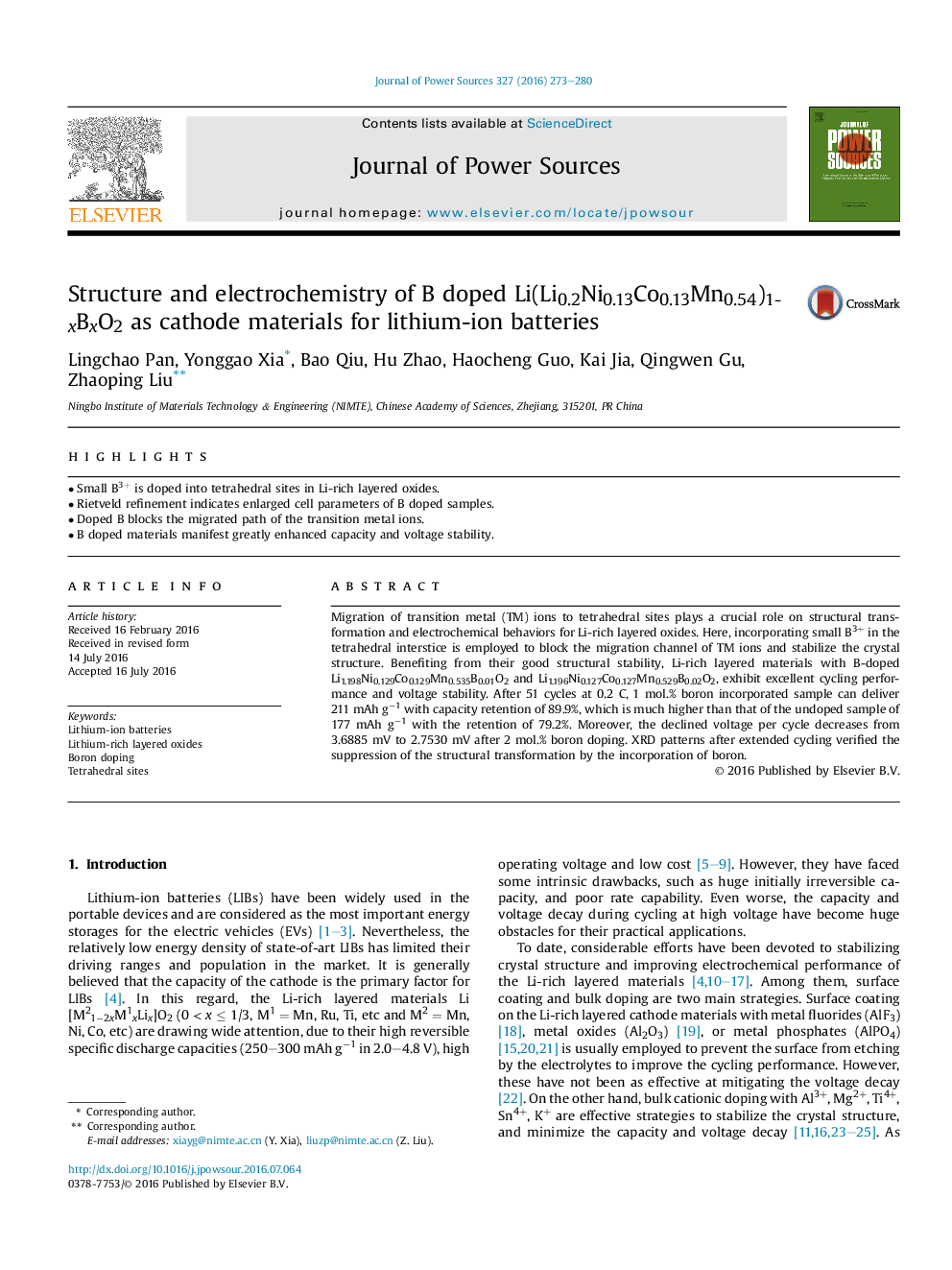| Article ID | Journal | Published Year | Pages | File Type |
|---|---|---|---|---|
| 7726969 | Journal of Power Sources | 2016 | 8 Pages |
Abstract
Migration of transition metal (TM) ions to tetrahedral sites plays a crucial role on structural transformation and electrochemical behaviors for Li-rich layered oxides. Here, incorporating small B3+ in the tetrahedral interstice is employed to block the migration channel of TM ions and stabilize the crystal structure. Benefiting from their good structural stability, Li-rich layered materials with B-doped Li1.198Ni0.129Co0.129Mn0.535B0.01O2 and Li1.196Ni0.127Co0.127Mn0.529B0.02O2, exhibit excellent cycling performance and voltage stability. After 51 cycles at 0.2Â C, 1Â mol.% boron incorporated sample can deliver 211Â mAh gâ1 with capacity retention of 89.9%, which is much higher than that of the undoped sample of 177Â mAh gâ1 with the retention of 79.2%. Moreover, the declined voltage per cycle decreases from 3.6885Â mV to 2.7530Â mV after 2Â mol.% boron doping. XRD patterns after extended cycling verified the suppression of the structural transformation by the incorporation of boron.
Related Topics
Physical Sciences and Engineering
Chemistry
Electrochemistry
Authors
Lingchao Pan, Yonggao Xia, Bao Qiu, Hu Zhao, Haocheng Guo, Kai Jia, Qingwen Gu, Zhaoping Liu,
